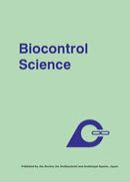3 巻, 2 号
選択された号の論文の10件中1~10を表示しています
- |<
- <
- 1
- >
- >|
-
1998 年 3 巻 2 号 p. 57-62
発行日: 1998/09/20
公開日: 2010/06/28
PDF形式でダウンロード (2240K) -
1998 年 3 巻 2 号 p. 63-72
発行日: 1998/09/20
公開日: 2010/06/28
PDF形式でダウンロード (1551K) -
1998 年 3 巻 2 号 p. 73-77
発行日: 1998/09/20
公開日: 2010/06/28
PDF形式でダウンロード (649K) -
Microbial Calorimetry of Supported Cultures and Its Application to the Study of Antimicrobial Action1998 年 3 巻 2 号 p. 79-85
発行日: 1998/09/20
公開日: 2010/06/28
PDF形式でダウンロード (2677K) -
1998 年 3 巻 2 号 p. 87-92
発行日: 1998/09/20
公開日: 2010/06/28
PDF形式でダウンロード (800K) -
1998 年 3 巻 2 号 p. 93-98
発行日: 1998/09/20
公開日: 2010/06/28
PDF形式でダウンロード (2034K) -
1998 年 3 巻 2 号 p. 99-103
発行日: 1998/09/20
公開日: 2010/06/28
PDF形式でダウンロード (672K) -
1998 年 3 巻 2 号 p. 105-108
発行日: 1998/09/20
公開日: 2010/06/28
PDF形式でダウンロード (533K) -
1998 年 3 巻 2 号 p. 109-112
発行日: 1998/09/20
公開日: 2010/06/28
PDF形式でダウンロード (4815K) -
1998 年 3 巻 2 号 p. 113-115
発行日: 1998/09/20
公開日: 2010/06/28
PDF形式でダウンロード (332K)
- |<
- <
- 1
- >
- >|
